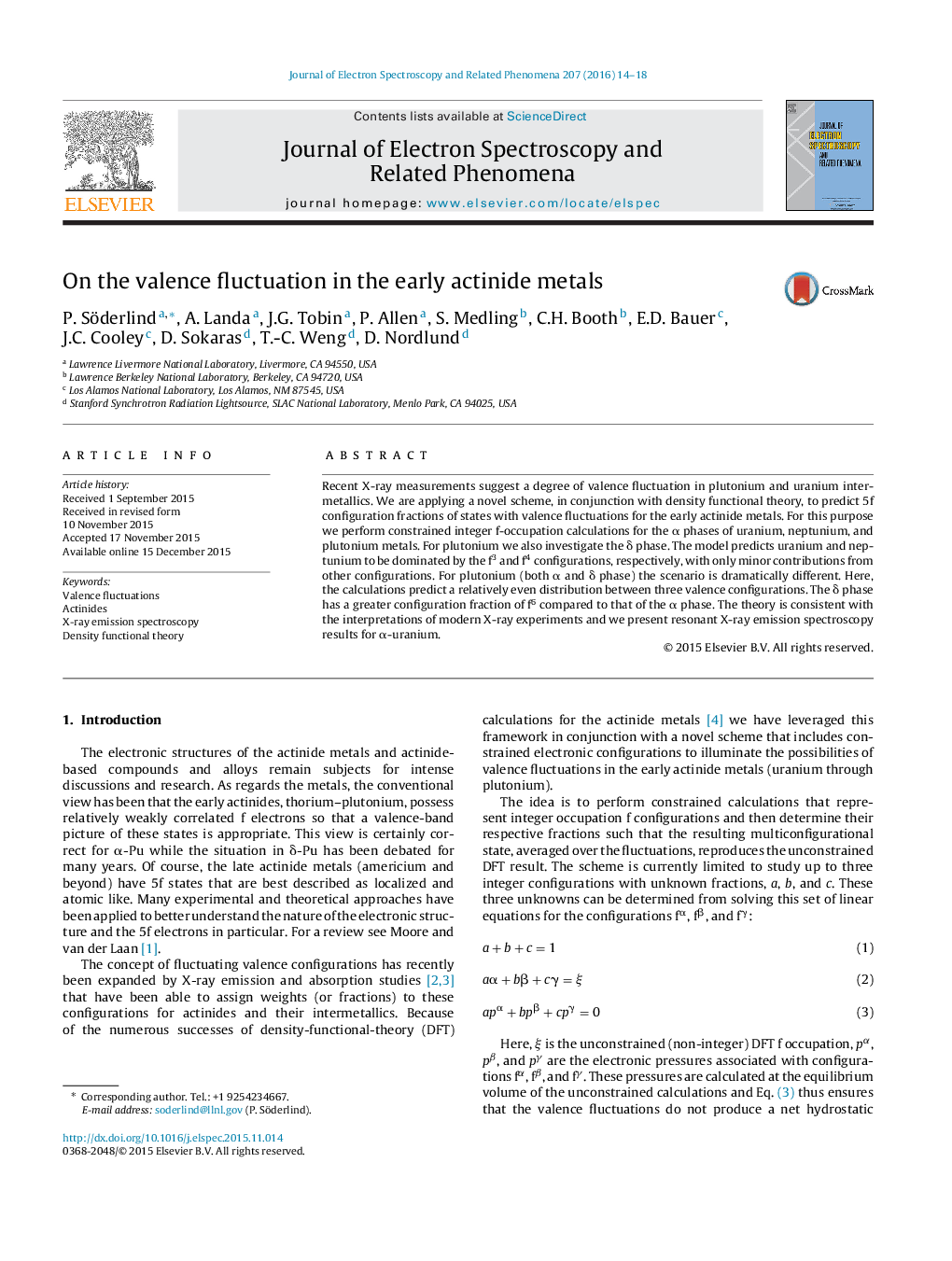| Article ID | Journal | Published Year | Pages | File Type |
|---|---|---|---|---|
| 5395577 | Journal of Electron Spectroscopy and Related Phenomena | 2016 | 5 Pages |
Abstract
Recent X-ray measurements suggest a degree of valence fluctuation in plutonium and uranium intermetallics. We are applying a novel scheme, in conjunction with density functional theory, to predict 5f configuration fractions of states with valence fluctuations for the early actinide metals. For this purpose we perform constrained integer f-occupation calculations for the α phases of uranium, neptunium, and plutonium metals. For plutonium we also investigate the δ phase. The model predicts uranium and neptunium to be dominated by the f3 and f4 configurations, respectively, with only minor contributions from other configurations. For plutonium (both α and δ phase) the scenario is dramatically different. Here, the calculations predict a relatively even distribution between three valence configurations. The δ phase has a greater configuration fraction of f6 compared to that of the α phase. The theory is consistent with the interpretations of modern X-ray experiments and we present resonant X-ray emission spectroscopy results for α-uranium.
Related Topics
Physical Sciences and Engineering
Chemistry
Physical and Theoretical Chemistry
Authors
P. Söderlind, A. Landa, J.G. Tobin, P. Allen, S. Medling, C.H. Booth, E.D. Bauer, J.C. Cooley, D. Sokaras, T.-C. Weng, D. Nordlund,
